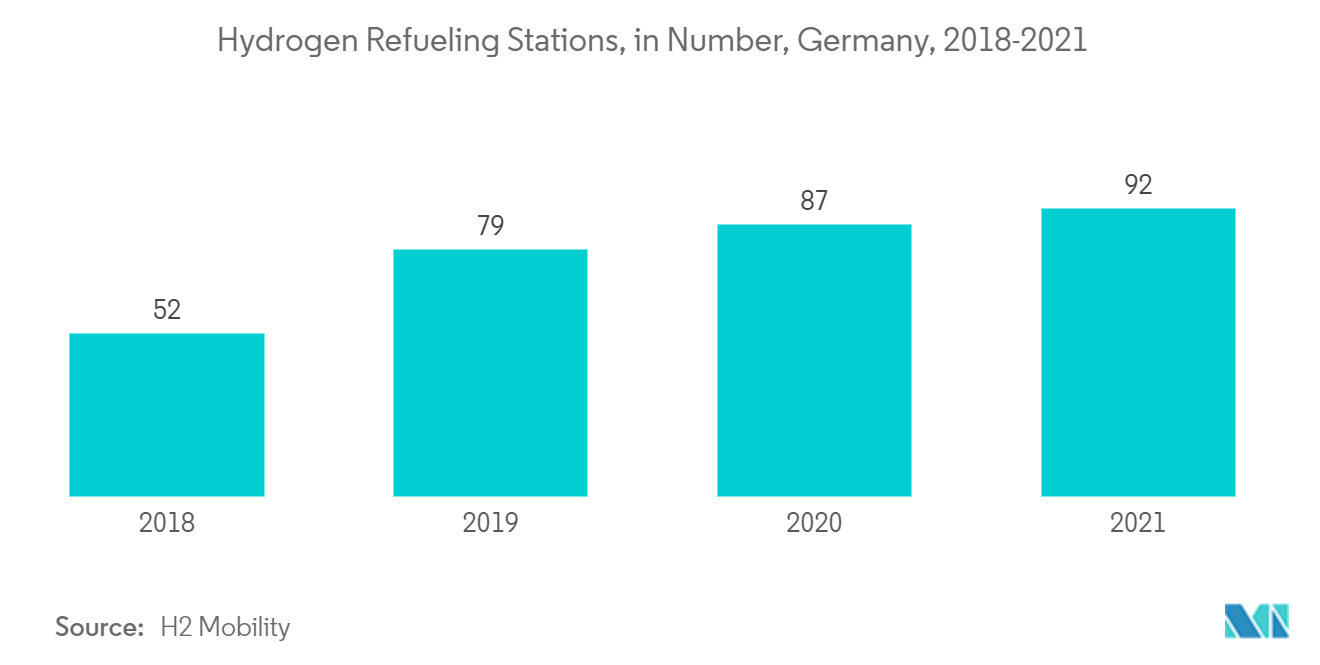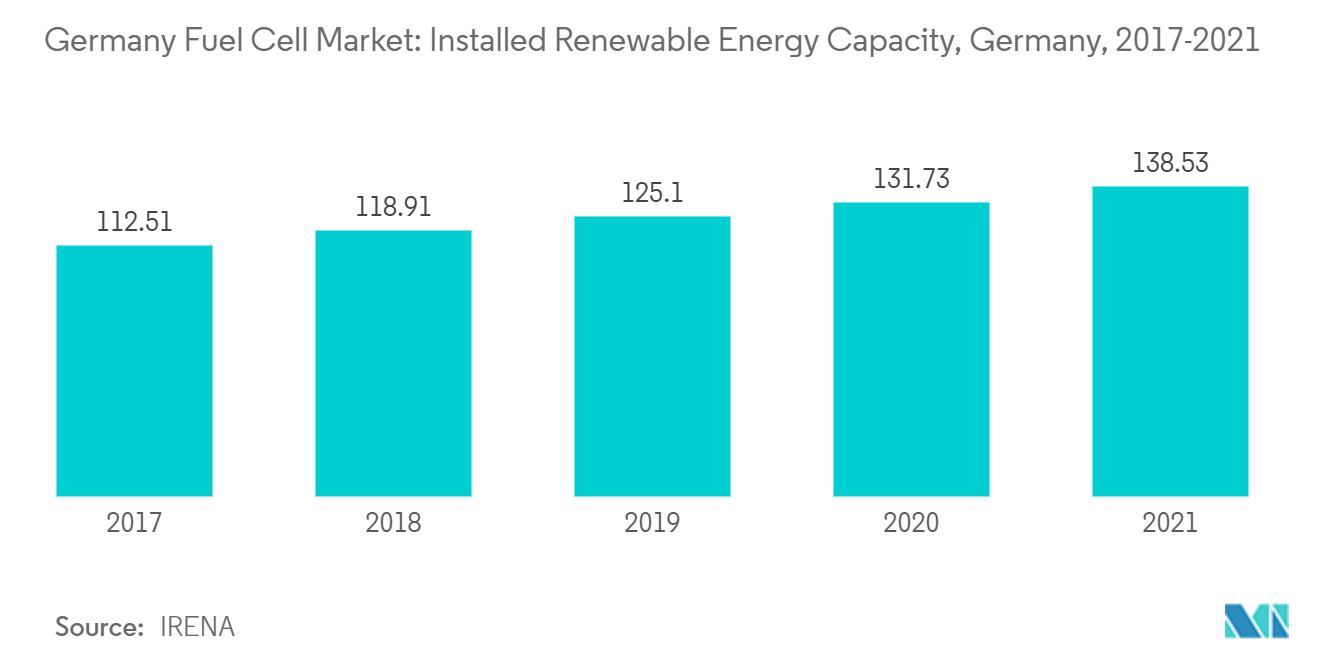Market Trends of Germany Fuel Cell Industry
This section covers the major market trends shaping the Germany Fuel Cell Market according to our research experts:
Polymer Electrolyte Membrane Fuel Cell (PEM) to Dominate the Market
- PEM fuel cell used for electrical power generation continues to dominate the stationary application, while household heat and power it is in the nascent stage.
- According to H2 Mobility, as of March 2021, there were 92 hydrogen filling stations in Germany, up by nearly 77% from 52 in 2018. This is indicative of the steady rise in the demand for hydrogen in the transport sector, driving the demand for hydrogen refueling stations and hence the demand for PEM fuel cells, the most commonly used techniques used in the transport sector.
- The marine sector is also expected to witness the adoption of PEM fuel in the coming years for supplying power to hotel operations of cruise ships during docking and for the provision of primary propulsion power when ships are at sea, mainly due to IMO's emission regulations on the marine sector.
- The commercialization of PEM fuel cells has been limited due to the high cost and low stability of electrodes. Generally, platinum on carbon support (Pt/C) is the most widely used catalyst for both anode and cathode in PEM fuel cells.
- However, as research has progressed, commercialsiation has increased. In December 2022, German automotive and industrial supplier Schaeffler has signed a letter of intent (LOI) with French hydrogen producer Lhyfe that includes a technology partnership, green hydrogen, and a 15 MW industrial electrolysis plant in Herzogenaurach, Germany. Under this partnership, Schaeffler will provide polymer electrolyte membrane (PEM) electrolyzers to Lhyfe. Such developments indicate that the PEM cell segment is expected to dominate the market during the forecast period.

Increasing Government Support to Drive the Market
- The fuel cell technology has been under development in Germany for many years, both for the distributed generation of power and heat and as a source of power for vehicles in mobile applications. Since the pandemic has subsided, and the Russia-Ukraine conflict has forced Germany to accelerate its transition towards renewables, the German government has been trying to speed up research and development into renewable energy technologies such as green hydrogen and fuel cells.
- Additonally, as Germany upgrades it's renewable energy capacity, more green energy will be available for running electrolysers, which can be used to produce green hydrogen. As of 2021, according to IRENA, Germany's renewable enrgy capacity stood at 138.15 GW, up by nearly 4.1% year-on-year, and up by nearly 21.5% since 2017. As German lawnmakers try to accelerate the adoption and expansion of renewable energy capacity, this rapid rise in renewable energy capacity is expected to continue, driving the market during the forecast period.
- In September 2021, the German government allocated nearly EUR 8 billion (USD 9.4 billion) of funding support for 62 hydrogen projects. Additonally, the government approved EUR 900 million (USD 1 billion) in funding for H2Global, an initiative to auction tenyear hydrogen supply contracts matched with equivalent hydrogen off-take contracts, with a public intermediary covering the difference between the costs of the two contracts
- The funding from the Federal Ministry for Economic Affairs and Energy for research and development in the field of fuel cell and hydrogen technologies is tied into the 'National Hydrogen and Fuel Cell Technology Innovation Programme' (NIP), which was launched in 2006. The programme is being continued as the government's NIP2 programme in the 2016-2025 period.
- In December 2022, the state government of Bavaria in Germany presented its public transport strategy for 2030, which supports hydrogen fuel cells for railways. Such developments demonstrate how

